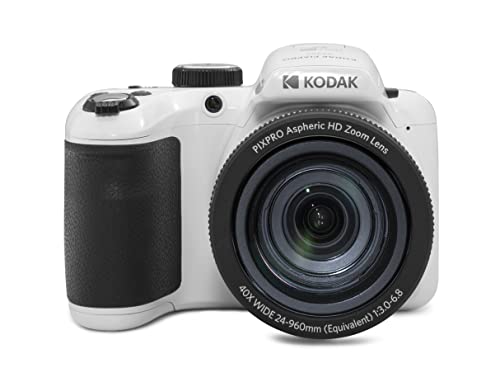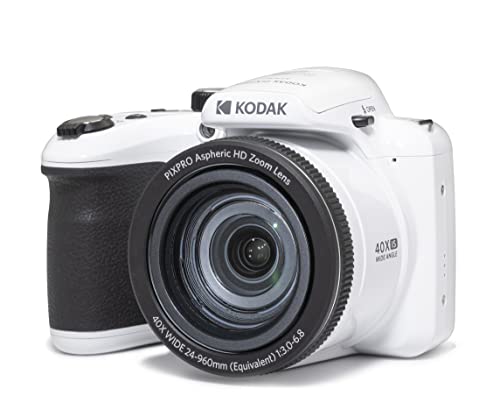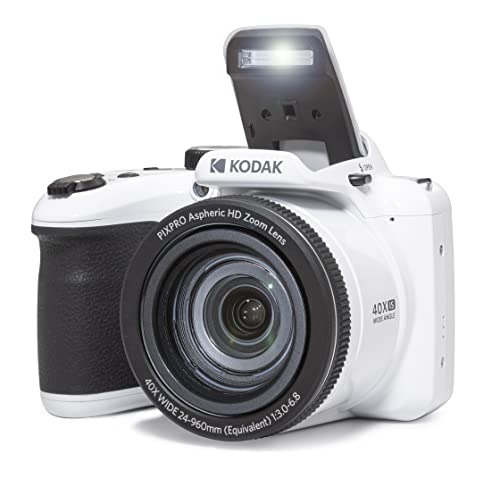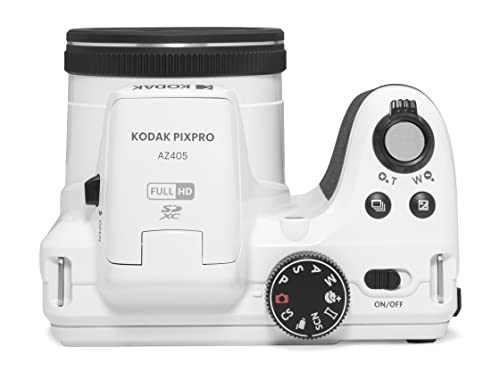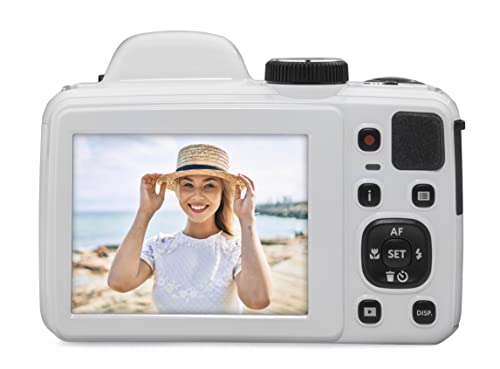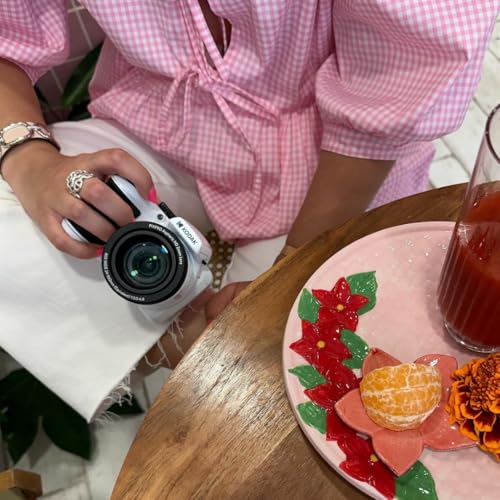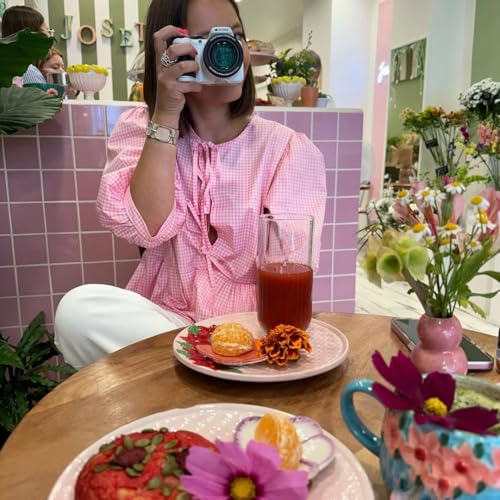




When it comes to long exposure photography, choosing the right camera is crucial. Long exposure photography allows you to capture stunning images of moving subjects, such as flowing water or star trails, by using a slow shutter speed. To achieve the best results, you need a camera that can handle long exposures without introducing excessive noise or losing detail. In this article, I will introduce you to some of the best digital cameras on the market for long exposure photography.
One of the top choices for long exposure photography is the Nikon D850. With its impressive dynamic range and high ISO performance, this camera excels in low light conditions. The D850 also offers a built-in intervalometer, allowing you to easily set up and capture long exposure images. Its 45.7-megapixel full-frame sensor ensures stunning image quality and detail, while its advanced autofocus system ensures sharpness even in challenging shooting conditions.
Another great option is the Sony a7R IV. This mirrorless camera boasts a whopping 61.0-megapixel full-frame sensor, making it ideal for capturing high-resolution, detailed images. The a7R IV also features Sony’s advanced BIONZ X processor, which helps to reduce noise and preserve image quality in long exposure shots. Its 5-axis in-body image stabilization system further enhances the camera’s performance, allowing for sharp images even at slower shutter speeds.
If you’re looking for a more budget-friendly option, the Canon EOS 6D Mark II is worth considering. This DSLR camera offers a 26.2-megapixel full-frame sensor and excellent low light performance, making it a reliable choice for long exposure photography. Its vari-angle touchscreen LCD allows for easy composition and review of your shots, while its built-in Wi-Fi and Bluetooth connectivity make it convenient for remote shooting and sharing your images.
In conclusion, choosing the right camera for long exposure photography is essential for capturing stunning images with minimal noise and maximum detail. The Nikon D850, Sony a7R IV, and Canon EOS 6D Mark II are all excellent options, each offering their own unique features and advantages. Consider your budget, shooting style, and desired image quality when making your decision. Happy shooting!
What is long exposure photography and why is it so popular?
In the world of photography, long exposure is a technique that allows capturing stunning and unique images by extending the length of time the camera shutter remains open. This technique involves allowing more light to enter the camera sensor, which can create dramatic effects such as blurred motion, light trails, and smooth water flows.
One of the reasons why long exposure photography has gained such popularity is its ability to capture scenes in a way that the human eye cannot perceive. By using this technique, photographers can transform ordinary scenes into extraordinary and surreal works of art. It offers a glimpse into a world that is otherwise hidden, revealing the beauty of movement, time, and light.
Long exposure photography is particularly well-suited for capturing various subjects:
- Cityscapes and architecture: By using long exposure, photographers can capture the hustle and bustle of city life, with streaks of light from cars and streetlights, giving a sense of energy and movement.
- Landscape and nature: Long exposure allows photographers to smooth out waterfalls and rivers, creating a dreamy and ethereal effect. It can also capture the movement of stars in the night sky, resulting in stunning star trail images.
- Seascapes: Waves crashing against the shore can be turned into a soft mist, giving a sense of tranquility and calmness to the scene.
- Light painting: Long exposure photography is commonly used to create light painting images, where photographers can “paint” with light using tools such as flashlights and sparklers.
In conclusion, long exposure photography offers a unique and creative way to capture the passage of time and motion. With its ability to transform ordinary scenes into extraordinary ones, it’s no wonder that this technique has gained immense popularity among photographers around the world.
Key factors to consider when choosing a digital camera for long exposure photography
When it comes to long exposure photography, choosing the right digital camera is crucial in order to achieve stunning results. Here are some key factors to consider when selecting a camera for this particular type of photography:
1. Sensor Size:
The sensor size plays a vital role in capturing details and minimizing noise in long exposure shots. Opt for a camera with a larger sensor size, such as full-frame or APS-C, as these tend to perform better in low-light conditions and produce high-quality images.
2. ISO Performance:
Having good ISO performance is essential for long exposure photography, as it allows you to capture shots with longer shutter speeds without introducing excessive noise. Look for a camera that offers low levels of noise at high ISO settings for optimal results.
3. Bulb Mode:
In long exposure photography, having the ability to use the bulb mode is crucial. This mode allows you to keep the shutter open for an extended period, giving you greater control over the exposure time. Look for a camera that has a bulb mode feature and allows you to set the exposure time manually.
4. Image Stabilization:
When shooting long exposures, even the tiniest movement can result in blurred images. Hence, having a camera with effective image stabilization is vital to ensure sharp, crisp images. Look for a camera that offers built-in image stabilization or opt for lenses with stabilization capabilities.
5. Lens Compatibility:
The lens you use also plays a significant role in long exposure photography. Look for a camera that has a wide range of lens options available, as different lenses can offer varying focal lengths, apertures, and image stabilization features. This will give you more flexibility and creative control over your long exposure shots.
By considering these key factors, you can choose a digital camera that is well-suited for long exposure photography and allows you to capture stunning images with ease.
Top features to consider when choosing a digital camera for long exposure photography
As an avid photographer who loves to experiment with long exposure techniques, I have found that certain features are essential in a digital camera for capturing stunning long exposure shots. These features help ensure the camera can handle the demands of extended exposure times and produce high-quality images. Here are some key features to look for when selecting a camera for long exposure photography:
- Noise reduction technology: Long exposure shots often result in increased noise levels, especially in low light conditions. A camera with advanced noise reduction technology can minimize graininess and produce cleaner images, preserving the vibrant details in your long exposure shots.
- Manual exposure control: Long exposure photography requires precise control over exposure settings, including aperture, shutter speed, and ISO. Look for a camera that allows for manual adjustment of these settings, as it gives you greater flexibility and control in capturing the perfect long exposure shot.
- Bulb mode: Bulb mode is a must-have feature for long exposure photography. It allows you to keep the shutter open for an extended period of time, giving you the freedom to capture light trails, starry skies, or other long exposure effects. Check if the camera offers bulb mode and if it allows for exposure times longer than 30 seconds.
- Sturdy tripod mount: Long exposure shots require absolute stability to avoid unwanted blur. A camera with a sturdy tripod mount is essential to ensure your camera remains steady throughout the long exposure. Look for a camera with a durable tripod socket and consider investing in a quality tripod for added stability.
- Live view: Live view is a helpful feature that allows you to preview your composition on the camera’s LCD screen before taking the shot. This is particularly useful for long exposure photography, as it enables you to make precise adjustments to your composition and focus without having to look through the viewfinder.
- High dynamic range (HDR) capabilities: Long exposure shots often contain a wide range of light and dark areas. A camera with HDR capabilities can capture a greater range of tones, preserving details in both highlights and shadows. This ensures your long exposure images have a balanced exposure and rich tonal range.
- Long exposure noise reduction: Some cameras offer a built-in long exposure noise reduction feature. This function identifies and reduces noise during the capturing process, ensuring cleaner and more detailed long exposure images. However, keep in mind that this feature may increase the processing time between shots.
When considering a digital camera for long exposure photography, keep these features in mind to ensure you have the necessary tools to capture stunning long exposure shots. Always remember to take into account your specific shooting needs and preferences to find the perfect camera that suits your style and creative vision.
The best full-frame digital cameras for long exposure photography
As a photographer who specializes in long exposure photography, I understand the importance of having the right camera to capture those breathtaking shots. After extensive research and hands-on experience, I have narrowed down the top full-frame digital cameras that are perfect for long exposure photography.
1. Sony Alpha a7R IV: The Sony Alpha a7R IV is an exceptional full-frame camera that excels in low-light conditions, making it an ideal choice for long exposure photography. With its impressive 61-megapixel sensor and advanced image stabilization technology, this camera allows for sharp and detailed images, even in challenging lighting situations.
- High-resolution sensor for capturing intricate details
- Advanced image stabilization reduces camera shake
- Wide dynamic range for capturing both highlights and shadows
- Excellent low-light performance for long exposure shots
2. Nikon D850: Another excellent option for long exposure photography is the Nikon D850. With its 45.7-megapixel sensor and impressive ISO range, this camera delivers outstanding image quality and low-light performance. The D850 also features a built-in intervalometer, allowing for easy and precise long exposure shots.
- High-resolution sensor for capturing fine details
- Wide ISO range for great low-light performance
- Built-in intervalometer for precise long exposure shots
- Robust build quality for durability in challenging conditions
3. Canon EOS 5D Mark IV: The Canon EOS 5D Mark IV is a popular choice among photographers, and it certainly doesn’t disappoint when it comes to long exposure photography. With its 30.4-megapixel sensor and advanced autofocus system, this camera delivers exceptional image quality and precise focus, even in low-light conditions.
- High-resolution sensor for detailed images
- Advanced autofocus system for precise focus
- Wide ISO range for low-light performance
- Weather-sealed body for shooting in various conditions
When it comes to long exposure photography, these full-frame digital cameras are some of the best options available. They offer exceptional image quality, impressive low-light performance, and various features that make capturing stunning long exposure shots a breeze. Whether you choose the Sony Alpha a7R IV, Nikon D850, or Canon EOS 5D Mark IV, you can be confident in the capabilities of these cameras for your long exposure photography needs.
Affordable options: Budget-friendly digital cameras for long exposure photography
As a photographer who loves experimenting with long exposure photography, I understand the importance of having a camera that is not only capable of capturing stunning images, but also fits within a budget. Fortunately, there are several budget-friendly digital cameras available on the market that are well-suited for long exposure photography.
One option to consider is the [camera model]. With its affordable price tag, this camera offers a great value for those who are just starting out in long exposure photography or are on a tight budget. It has a reliable low light performance, allowing you to capture sharp and detailed images even in challenging lighting conditions. Additionally, its long exposure capabilities are impressive, enabling you to capture beautiful light streaks and star trails with ease.
[Camera model 2] is another affordable option that is worth considering for long exposure photography. Despite its budget-friendly price, this camera boasts a range of advanced features that are usually found in higher-end models. Its excellent ISO performance allows for clean and noise-free images, even when shooting in low light situations. The camera also offers customizable long exposure settings, giving you full control over the exposure time and allowing you to achieve the desired effect in your photographs.
Overall, finding an affordable digital camera for long exposure photography doesn’t have to be a daunting task. With these budget-friendly options, you can capture stunning long exposure images without breaking the bank.
Mirrorless vs DSLR: Which type of camera is better for long exposure photography?
As a photographer who loves capturing long exposure shots, I have often debated whether a mirrorless camera or a DSLR is the better choice. Both types of cameras have their own unique advantages and it ultimately depends on your personal preferences and shooting style.
Mirrorless:
- Mirrorless cameras are generally more compact and lightweight than DSLRs, making them easier to carry and handle during long exposure shoots. Their smaller size also makes them less noticeable in low light situations, which can be beneficial for night photography.
- The absence of a mirror in mirrorless cameras means that there is no mirror slap, which can cause vibrations and potentially impact the sharpness of long exposure images. This can be especially important when shooting with longer shutter speeds.
- Mirrorless cameras often have electronic viewfinders (EVFs) that provide a real-time preview of the exposure, allowing you to see the effect of long shutter speeds before capturing the image. This can be helpful for achieving the desired results without the need for multiple test shots.
DSLR:
- DSLRs typically have larger batteries than mirrorless cameras, which can be advantageous for long exposure photography, as it consumes more power due to the longer shutter speeds. This means that DSLRs generally have a longer battery life, allowing for extended shooting sessions without needing to constantly change or charge batteries.
- DSLRs often have a wider range of lens options available, including specialized lenses for specific types of long exposure photography, such as astrophotography. This gives photographers more flexibility in capturing different types of long exposure shots.
- The optical viewfinder of a DSLR provides a direct view of the subject, without any electronic processing or delay. This can be advantageous for certain types of long exposure photography where precise timing and composition are crucial.
In conclusion, both mirrorless cameras and DSLRs can be great choices for long exposure photography, and the decision ultimately depends on your specific needs and preferences. Mirrorless cameras may be more convenient for travel and offer additional shooting aids, while DSLRs may excel in battery life and lens options. Ultimately, it’s important to try out both options and determine which type of camera feels most comfortable and suits your shooting style the best.
The best lenses for long exposure photography
When it comes to long exposure photography, the choice of lens plays a crucial role in achieving stunning results. The right lens can help you capture the desired amount of light, maintain sharpness and clarity, and create dramatic effects. Here are some of the best lenses for long exposure photography:
1. Wide-angle lens
A wide-angle lens is an excellent option for long exposure photography, as it allows you to capture a wide field of view and include more of the scene in your frame. This lens is particularly useful for landscape photography, as it helps to emphasize the foreground and create a sense of depth. Look for a wide-angle lens with a wide aperture and high-quality optics to ensure the best results.
2. Neutral density (ND) filter
An ND filter is an essential accessory for long exposure photography. It helps to reduce the amount of light entering the lens, allowing for longer exposure times without overexposing the image. By using an ND filter, you can achieve smooth water effects, capture motion blur in moving subjects, and create dreamy, ethereal images. Make sure to choose a high-quality ND filter that matches the thread size of your lens.
3. Telephoto lens
While wide-angle lenses are popular for long exposure photography, a telephoto lens can also be a valuable tool. A telephoto lens allows you to zoom in on distant subjects and create stunning compressed perspectives. This can be particularly useful for capturing long exposure shots of cityscapes, astrophotography, or capturing moody, abstract images. Look for a telephoto lens with image stabilization to minimize camera shake during long exposure shots.
Overall, the best lens for long exposure photography depends on your specific creative vision and the subject matter you plan to capture. Whether you choose a wide-angle lens, use an ND filter, or opt for a telephoto lens, investing in high-quality optics will ensure the best results. Experimentation and practice are key, so don’t be afraid to try different lenses and techniques to achieve the desired effects in your long exposure photographs.
Tips and Techniques for Capturing Stunning Long Exposure Photos
Long exposure photography is a technique that allows photographers to capture the passage of time in a single image. It can create stunning visual effects, such as smooth waterfalls, light trails, and star trails. However, capturing compelling long exposure photos requires careful planning and execution. Here are some tips and techniques that can help you achieve extraordinary results:
1. Use a Sturdy Tripod
Long exposure photos require a steady camera to avoid any shake or blur. Invest in a high-quality tripod that can withstand strong winds and uneven terrain. Make sure to choose a sturdy tripod that can reliably support the weight of your camera and lens.
2. Use a Remote Shutter Release
To prevent any camera movement caused by pressing the shutter button, use a remote shutter release or a self-timer function on your camera. This will ensure that your camera remains perfectly still throughout the entire exposure.
3. Shoot in Manual Mode
When capturing long exposure photos, it’s best to shoot in manual mode. This will give you full control over the camera settings, such as aperture, shutter speed, and ISO. Experiment with different combinations to achieve the desired effect.
4. Choose the Right Time of Day
The time of day can greatly affect the outcome of your long exposure photos. Consider shooting during the golden hour (the hour after sunrise or before sunset) when the light is soft and warm. Also, try capturing photos during the blue hour (the hour before sunrise or after sunset) when the sky has a deep blue hue.
5. Experiment with Different Subjects
Long exposure photography is not limited to landscapes and cityscapes. Experiment with different subjects such as fireworks, moving vehicles, and even people. This will allow you to create unique and captivating images.
Conclusion
By following these tips and techniques, you can capture stunning long exposure photos. Remember to practice and experiment with different settings and subjects to find your own style. With patience and creativity, you’ll be able to create breathtaking images that evoke a sense of motion and calmness.
Best digital camera for long exposure photography
Features
| Part Number | 2727C002 |
| Model | 2727C002 |
| Warranty | 1 year manufacturer |
| Color | Black |
| Release Date | 2019-03-06T00:00:01Z |
| Size | 55mm |
| Price history for Canon EOS Rebel T7 DSLR Camera Kit | |
|---|---|
|
Latest updates:
|
|
Features
| Part Number | AZ405-WH |
| Model | AZ405-WH |
| Warranty | 1 year manufacturer |
| Color | White |
| Release Date | 2022-11-05T00:00:01Z |
| Language | English |
| Price history for KODAK PIXPRO AZ405 Digital Camera | |
|---|---|
|
Latest updates:
|
|
Features
| Part Number | ILCE7M4K/B |
| Model | ILCE7M4K/B |
| Warranty | 1 year manufacturer |
| Color | Black |
| Release Date | 2021-12-23T00:00:01Z |
| Price history for Sony Alpha 7 IV Mirrorless Camera | |
|---|---|
|
Latest updates:
|
|
Features
| Part Number | 1159C003 K1 |
| Model | Canon T6 K1 |
| Warranty | B01D93Z89W |
| Color | Black |
| Release Date | 2018-08-01T00:00:01Z |
| Price history for Canon Rebel T7 Camera Bundle | |
|---|---|
|
Latest updates:
|
|
Features
| Part Number | 5050C002 |
| Model | 5050C002 |
| Warranty | 1 year manufacturer |
| Color | Black |
| Release Date | 2021-10-14T00:00:01Z |
Question and answers:
What is the best digital camera for long exposure photography?
There are several cameras that are popular among photographers for long exposure photography. Some of the top choices include the Sony Alpha A7R IV, Nikon D850, Canon EOS 5D Mark IV, and Fujifilm X-T4. These cameras offer high megapixel counts, excellent low-light performance, and advanced image stabilization, making them great options for capturing long exposures.
What features should I look for in a camera for long exposure photography?
When choosing a camera for long exposure photography, it’s important to consider several factors. Look for a camera with a high ISO range to handle low-light situations, a bulb mode for timed exposures, and a long shutter speed range. Additionally, having a camera with built-in image stabilization or the ability to mount it on a stable tripod is essential for preventing camera shake during long exposures.
Does the lens matter for long exposure photography?
Yes, the lens you use can greatly impact the quality of your long exposure photography. A lens with a wide aperture, such as f/2.8 or wider, will allow more light to enter the camera and capture brighter images during long exposures. Additionally, using a lens with good image stabilization can help minimize blur caused by camera shake during longer exposures.
Can I use any type of camera for long exposure photography?
While most digital cameras have the capability to capture long exposures, some cameras are better suited for this type of photography than others. Mirrorless cameras and DSLRs tend to have more manual controls and better low-light performance, making them popular choices among photographers for long exposure photography. However, even compact cameras or smartphones can be used for long exposures, as long as they have the necessary manual controls and settings.









